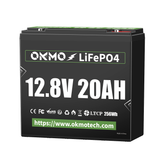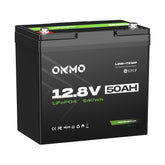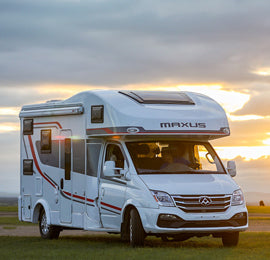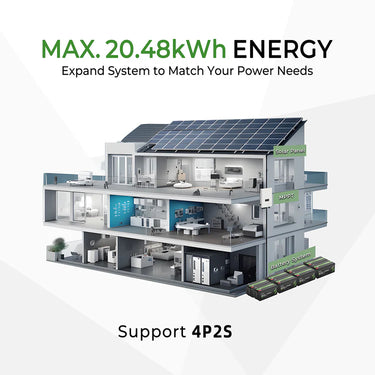How Long Will a Trolling Motor Run on a 12V Battery?

A Comparative Analysis of LiFePO4 Batteries (12V 100Ah–400Ah) and Factors Affecting Runtime
For anglers and boating enthusiasts, understanding how long a trolling motor can run on a 12V battery is critical for planning trips and avoiding stranded adventures. Lithium iron phosphate (LiFePO4) batteries have revolutionized marine power systems due to their lightweight design, deep-cycle capabilities, and stable voltage output. This article compares the runtime of five mainstream LiFePO4 battery capacities—12V 100Ah, 200Ah, 280Ah, 300Ah, and 400Ah—under identical conditions (fully charged, 25°C ambient temperature) and explores factors that may alter these estimates.
 Part 1: Theoretical Runtime Calculations
Part 1: Theoretical Runtime Calculations
The runtime of a trolling motor depends on two key factors:
-
Battery Capacity (Ah): Total stored energy.
-
Motor Current Draw (A): Power consumption at a specific speed setting.
Formula:
Runtime (hours)=Motor Current (A)Battery Capacity (Ah)
Assumptions for Comparison:
-
Battery Type: LiFePO4 (100% Depth of Discharge, no capacity loss).
-
Motor Current: 30A (a common average for medium-speed trolling).
-
Ambient Temperature: 25°C (ideal for LiFePO4 performance).
Runtime Comparison Table
| Battery Capacity | Theoretical Runtime (Hours) | Distance Covered* |
|---|---|---|
| 12V 100Ah | 3.3 | ~16.5 km |
| 12V 200Ah | 6.6 | ~33 km |
| 12V 280Ah | 9.3 | ~46.5 km |
| 12V 300Ah | 10 | ~50 km |
| 12V 400Ah | 13.3 | ~66.5 km |
*Assuming a trolling motor speed of 5 km/h.
Part 2: Real-World Factors That Reduce Runtime
While the above calculations assume ideal conditions, real-world scenarios introduce variables that shorten runtime. Below are key factors and their estimated impact:
1. Motor Speed and Current Draw
Trolling motors consume more power at higher speeds. For example:
-
Low Speed (10A): 12V 100Ah → 10 hours.
-
High Speed (50A): 12V 100Ah → 2 hours.
Speed vs. Runtime Curve:
-
A Minn Kota Endura C2 30LB motor draws:
-
5A at Speed 1 → 20 hours (100Ah).
-
30A at Speed 5 → 3.3 hours (100Ah).
-
56A at Max Speed → 1.8 hours (100Ah).
-
2. Ambient Temperature
LiFePO4 batteries lose capacity in cold weather:
-
0°C: ~10–15% capacity reduction.
-
-10°C: ~20–25% capacity reduction.
Example:
A 12V 100Ah battery at -10°C effectively becomes a 75Ah battery, reducing runtime to 2.5 hours (vs. 3.3 hours at 25°C).
3. Battery Age and Health
After 2,000–5,000 cycles, LiFePO4 batteries retain ~80% capacity:
-
A degraded 12V 400Ah battery (80% health) → 320Ah → 10.6 hours runtime (vs. 13.3 hours when new).
4. Voltage Drop and Efficiency Losses
-
Cable Resistance: Poor wiring or corroded connectors can waste 5–10% of energy.
-
BMS Overhead: Battery Management Systems consume ~2–3% power for monitoring.
Net Impact: Up to 15% runtime reduction in poorly maintained systems.
5. Accessory Loads
Additional devices (fish finders, GPS, lights) drain the battery:
-
A 10W fish finder draws ~0.8A.
-
On a 12V 100Ah battery, runtime drops from 3.3h → 3.0h (30 minutes lost).
-
Part 3: Adjusted Runtime Estimates Under Real Conditions
Combining the above factors, here’s how each battery performs in a realistic scenario:
-
Conditions: 10°C ambient temperature, 30A motor load, 5% wiring loss, 10% accessory load.
| Battery Capacity | Theoretical Runtime | Adjusted Runtime |
|---|---|---|
| 12V 100Ah | 3.3h | 2.4h (-27%) |
| 12V 200Ah | 6.6h | 4.8h (-27%) |
| 12V 280Ah | 9.3h | 6.8h (-27%) |
| 12V 300Ah | 10h | 7.3h (-27%) |
| 12V 400Ah | 13.3h | 9.7h (-27%) |
 Part 4: How to Choose the Right Battery?
Part 4: How to Choose the Right Battery?
1. Match Capacity to Usage Patterns
-
Casual Fishing (3–4 hours): 12V 100Ah (budget-friendly, lightweight).
-
Full-Day Trips: 12V 200Ah–280Ah (balance of runtime and portability).
-
Multi-Day Expeditions: 12V 400Ah (maximize endurance, ideal for large boats).
2. Mitigate Runtime Losses
-
Use low-resistance cables (6–8 AWG) to minimize voltage drop.
-
Install a battery heater for cold climates.
-
Avoid discharging below 20% to prolong cycle life.
3. Cost vs. Capacity Trade-Off
-
12V 100Ah: 300–500 (e.g., Ampere Time).
-
12V 400Ah: 1,200–1,800 (e.g., Dakota Lithium).
Conclusion
While a 12V 100Ah LiFePO4 battery theoretically powers a 30A trolling motor batteries for 3.3 hours, real-world conditions like temperature, accessory loads, and motor speed can slash this to 2–2.5 hours. Larger capacities (e.g., 400Ah) provide a safety margin but add weight and cost.
Key Takeaways:
-
Always derate battery capacity by 20–30% for real-world estimates.
-
Prioritize batteries with low-temperature protection if fishing in cold climates.
-
Pair high-capacity batteries (300Ah+) with a solar charger for multi-day autonomy.
By aligning battery choice with your trolling habits and environmental demands, you can ensure uninterrupted time on the water—whether you’re chasing bass in a small pond or navigating coastal currents.











